
The Cyprinidae are the family of freshwater fish, collectively called cyprinids, that includes the carps, the true minnows, and their relatives. Also commonly called the "carp family", or "minnow family", Cyprinidae is the largest and most diverse fish family and the largest vertebrate animal family in general, with about 3,000 species of which only 1,270 remain extant, divided into about 370 genera. They range from about 12 mm to the 3-m Catlocarpio siamensis. The family belongs to the ostariophysian order Cypriniformes, of whose genera and species the cyprinids make up more than two-thirds. The family name is derived from the Ancient Greek kyprînos.

Rosaceae, the rose family, is a medium-sized family of flowering plants, including 4,828 known species in 91 genera.

The Araliaceae is a family of flowering plants composed of 55 genera and 1500 species consisting of primarily woody plants and some herbaceous plants. The morphology of Araliaceae varies widely, but it is predominantly distinguishable based on its woody habit, tropical distribution, and the presence of simple umbels.

Ranunculaceae is a family of over 2,000 known species of flowering plants in 43 genera, distributed worldwide.
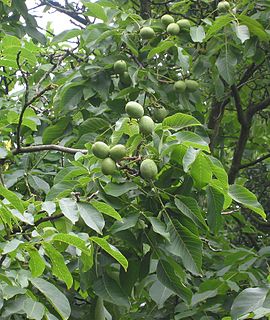
The Juglandaceae are a plant family known as the walnut family. They are trees, or sometimes shrubs, in the order Fagales. Members of this family are native to the Americas, Eurasia, and Southeast Asia.

Zygophyllaceae is a family of flowering plants that contains the bean-caper and caltrop. The family includes around 285 species in 22 genera.

The Crambidae are the grass moth family of lepidopterans. They are variable in appearance, the nominal subfamily Crambinae taking up closely folded postures on grass stems where they are inconspicuous, while other subfamilies include brightly coloured and patterned insects which rest in wing-spread attitudes.

The Dytiscidae – based on the Greek dytikos (δυτικός), "able to dive" – are the predaceous diving beetles, a family of water beetles. They occur in virtually any freshwater habitat around the world, but a few species live among leaf litter. The adults of most are between 1 and 2.5 cm (0.4–1.0 in) long, though much variation is seen between species. The European Dytiscus latissimus and Brazilian Megadytes ducalis are the largest, reaching up to 4.5 cm (1.8 in) and 4.75 cm (1.9 in) respectively. In contrast, the smallest is likely the Australian Limbodessus atypicali of subterranean waters, which only is about 0.9 mm (0.035 in) long. Most are dark brown, blackish, or dark olive in color with golden highlights in some subfamilies. The larvae are commonly known as water tigers due to their voracious appetite. They have short, but sharp mandibles and immediately upon biting, they deliver digestive enzymes into prey to suck their liquefied remains. The family includes more than 4,000 described species in numerous genera.

Ailuridae is a family in the mammal order Carnivora. The family consists of the red panda and its extinct relatives.
Viverravidae is an extinct family within the clade Carnivoramorpha. They are related to carnivorans, and lived from the early Palaeocene to the Eocene.
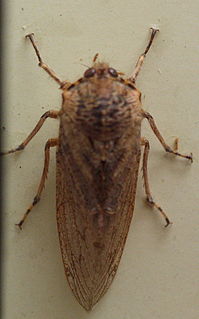
The Tettigarctidae, known as the hairy cicadas, are a small relict family of primitive cicadas. Along with more than 20 extinct genera, Tettigarctidae contains a single extant genus, Tettigarcta, with two extant species, one from southern Australia and one from the island of Tasmania. Fossil taxa include Paratettigarcta from the Miocene of New Zealand, Meuniera from the Paleocene of France, and Sanmai from the Late Jurassic of China, and Maculaferrum of early Late Cretaceous Canada.Tettigarcta are the closest living relatives of the true cicadas.

Hesperocyon is an extinct genus of canids that was endemic to North America, ranging from southern Canada to Colorado. It appeared during the Uintan age–Bridgerian age (NALMA) of the Mid-Eocene 42.5 mya—31.0 Ma. (AEO). Hesperocyon existed for approximately 11.5 million years .
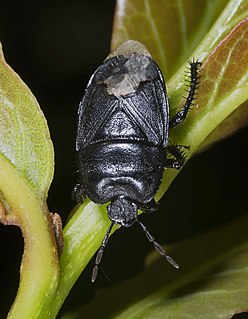
Cydnidae are a family of shield bugs, known by common names including burrowing bugs or burrower bugs. In some older classifications, Cydnidae sensu lato includes the subfamily Thyreocorinae, which are known commonly as "negro bugs", or "ebony bugs", and/or the families Thaumastellidae and Parastrachiidae. Though similar in appearance to a beetle at casual glance, they can be distinguished by both their piercing/sucking mouthparts, and wing configuration. Of some 750 species of burrower bugs, 27 are reported as crop pests, and six species are thought to feed on peanut.
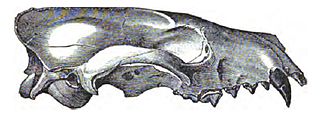
The extinct Hesperocyoninae are one of three subfamilies found within the canid family. The other two canid subfamilies are the extinct Borophaginae and extant Caninae.
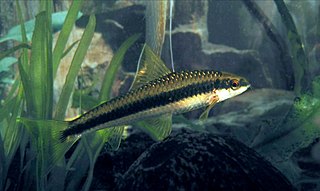
Labeoninae is a doubtfully distinct subfamily of ray-finned fishes in the family Cyprinidae of order Cypriniformes. They inhabit fresh water and the largest species richness is in the region around southern China, but there are also species elsewhere in Asia, and some members of Garra and Labeo are from Africa. They are a generally very apomorphic group, perhaps the most "advanced" of the Cyprinidae. A common name for these fishes is labeonins or labeoins.

Issidae is a family of planthoppers described by Spinola in 1839, belonging to the order Hemiptera, suborder Auchenorrhyncha superfamily Fulgoroidea.

Neolepisorus is a genus of ferns in the family Polypodiaceae, subfamily Microsoroideae, according to the Pteridophyte Phylogeny Group classification of 2016 (PPG I).

Lepisorus is a genus of ferns in the family Polypodiaceae, subfamily Microsoroideae, according to the Pteridophyte Phylogeny Group classification of 2016 (PPG I).
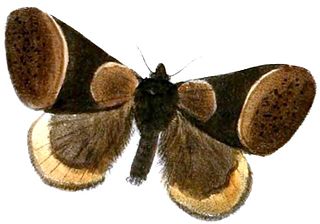
Pseudobistonidae is a family of Asian moths in the superfamily Geometroidea. It was erected in 2015 and contained Pseudobiston pinratanai as its only species. A second species was moved into this family in 2019: Heracula discivitta, in a new subfamily called Heraculinae.
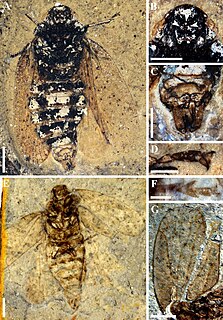
Sinoalidae is an extinct family of froghoppers known from the late Middle Jurassic to the early Late Cretaceous of Asia. They are one of two main Mesozoic families of froghoppers, alongside Procercopidae, unlike Procercopidae, Sinoalidae is thought to be an extinct side branch and not ancestral to modern froghoppers. Sinoalids have a temporally disjunct distribution being only known from the late Middle Jurassic (Callovian) Yanliao Biota of Inner Mongolia and the early Late Cretaceous (Cenomanian) aged Burmese amber of Myanmar, separated by over 60 million years. The family is "recognized by its tegmen with the costal area and clavus commonly more sclerotized and punctate than the remaining part, and its hind tibia with two rows of lateral spines"



















